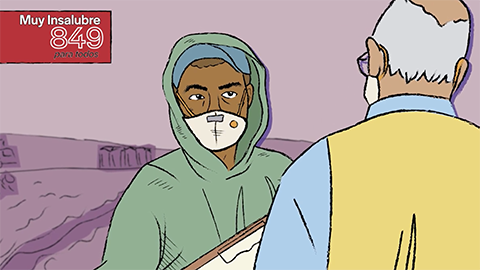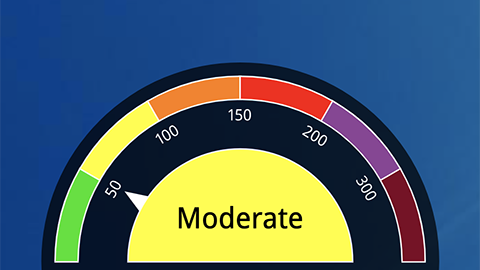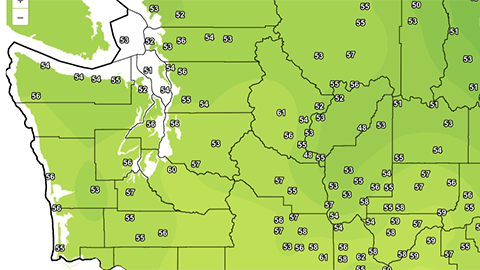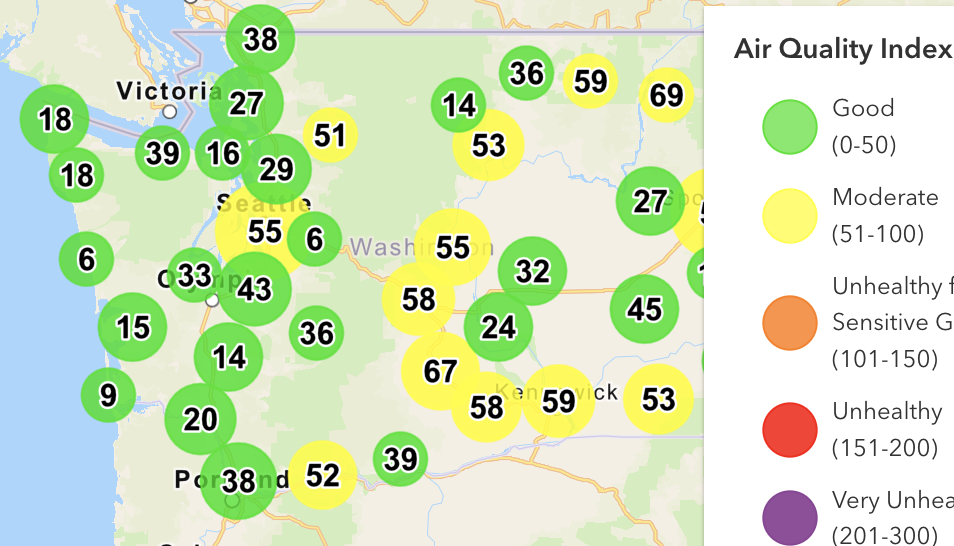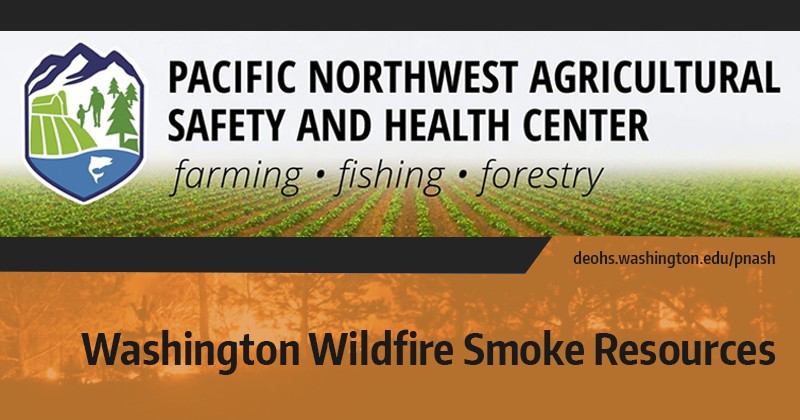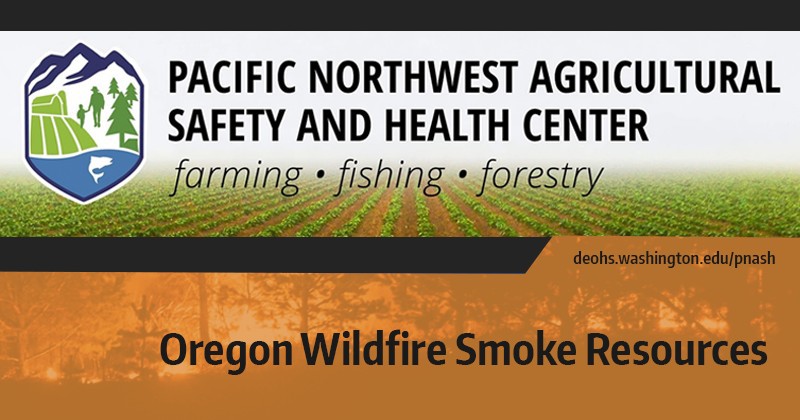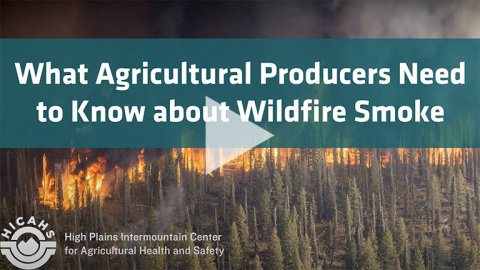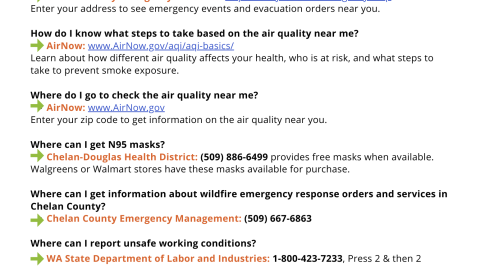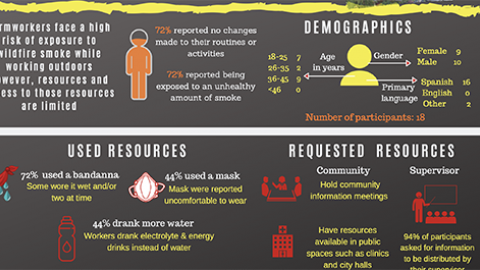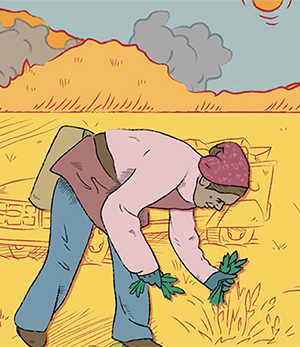 What is wildfire smoke?
What is wildfire smoke?
Wildfire smoke is a complex mixture of gases. As a wildfire burns, different compounds are released in the smoke, such as carbon monoxide, carbon dioxide, hydrocarbons, and particulate matter (PM). The toxicity of wildfire smoke can change very quickly depending on factors in the wildfire environment, such as weather, fire behavior, and the type of vegetation burning. Because of this, wildfire smoke exposure can be hazardous for anyone, including outdoor workers.
How can wildfire smoke affect an outdoor worker's health?
Outdoor workers in the Pacific Northwest can have different individual risk factors such as age and health conditions (e.g., pre-existing heart or lung disease) that make them more likely to be affected by wildfire smoke. Some health effects known or suspected to be caused by wildfire smoke include:
- Eye irritation, sore throat, wheeze, and cough,
- Asthma, bronchitis, and pneumonia,
- Cardiovascular (heart and blood vessel) outcomes, and
- Adverse birth outcomes
Workplace Tools
Northwest Regional Wildfire Smoke Resources
Workplace rules
Washington State Wildfire Smoke Rule
In December 2023, the Washington State Department of Labor & Industries (L&I) adopted new permanent safety rules to protect workers from breathing wildfire smoke. These rules for agriculture (WAC 296-307-098) require employers to check air quality, train workers, create a wildfire smoke response plan, make sure medical help and communication are available, and take stronger protective steps—like reducing exposure or providing respirators—as smoke levels rise. Training must happen before smoke reaches 20.5 µg/m³ (AQI 72) or higher and be repeated each year. To learn more, visit the WA Department of Labor & Industries website.
One way to find the current and forecasted PM2.5 is to go to enviwa.ecology.wa.gov and find the nearest monitor on the map, or fire.airnow.gov and enter the zip code of the location where you will be working. The current PM2.5 is also available from the Air Quality WA mobile app, or the AirNow mobile app.
Employees who do not have access to the internet can contact their employer for the current PM2.5. The U.S. EPA website www.enviroflash.info can transmit daily and forecasted air quality by email for your city or zip code.
State of Washington Dept. of Ecology Air Quality Map
Oregon OSHA Wildfire Smoke Rule
Oregon OSHA adopted permanent rules in 2022 to protect workers from exposure to wildfire smoke. Rule (OAR 437-004-9791) applies to agricultural workplaces. The rule outlines requirements for assessing air quality and taking protective actions when workers may be exposed to wildfire smoke. Key elements include monitoring the Air Quality Index (AQI); communicating air quality information to workers; implementing exposure control measures such as moving work indoors, adjusting work schedules, or providing respirators; and developing a wildfire smoke exposure protection plan. Employers must also provide training on health effects, symptoms of smoke exposure, and protective measures. To learn more, visit the Oregon Occupational Safety and Health Administration (OregonOSHA) webpage to learn more about these requirements.

